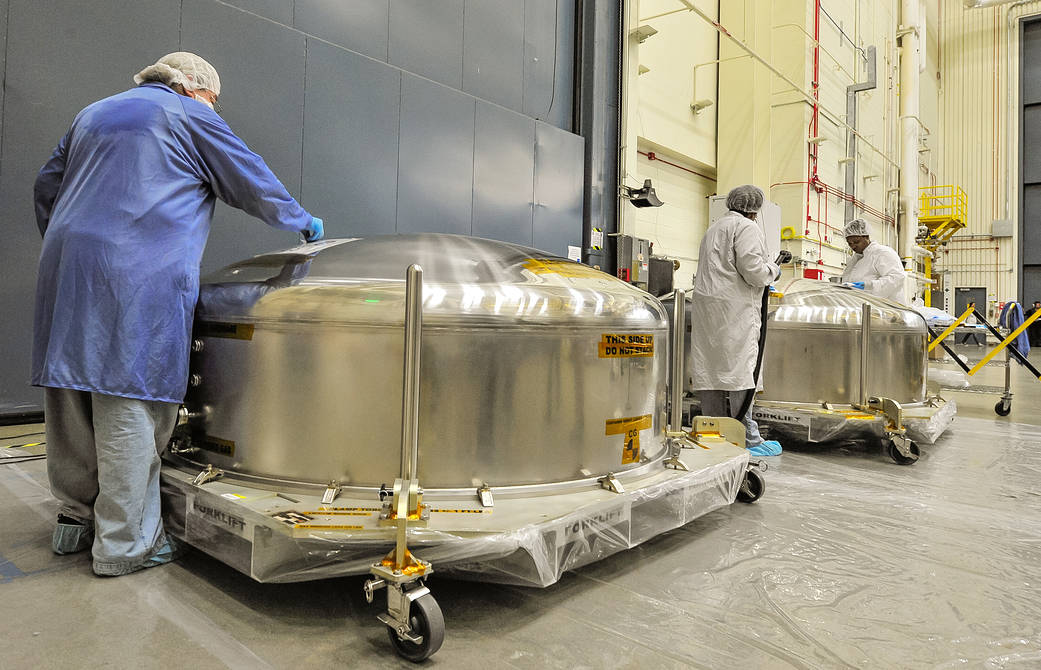The sole secondary mirror and another primary mirror that will fly aboard NASA’s James Webb Space Telescope arrived at NASA’s Goddard Space Flight Center in Greenbelt, Md., on Nov. 5, 2012. In this photo, the two mirrors are still housed in their shipping canisters. Technicians are cleaning the canisters prior to wheeling them into Goddard’s clean room.
Previously on Sept. 17, 2012, two other primary mirror segments arrived at Goddard and are currently being stored in the center’s giant clean room.
Ball Aerospace & Technologies Corp. of Boulder, Colo., manufactured, packed, and shipped the mirrors to Goddard.
The powerful primary mirrors of the Webb telescope will be able to detect the light from distant galaxies. The Webb telescope has 21 mirrors, with 18 primary mirror segments working together as one large 21.3-foot (6.5-meter) primary mirror. The mirror segments are made of beryllium, which was selected for its stiffness, light weight and stability at cryogenic temperatures. Bare beryllium is not very reflective of near-infrared light, so each mirror is coated with about 0.12 ounces of gold.
Unlike the 18 primary segments that make up the biggest mirror on the Webb telescope, the secondary mirror is perfectly rounded. The mirror is also convex, so the reflective surface bulges toward a light source. It looks much like the curved mirrors on the walls near parking garage exits that let motorists see around corners. This mirror is coated with a microscopic layer of gold to enable it to efficiently reflect infrared light (which is what the Webb telescope’s cameras see). The quality of the secondary mirror surface is so good that the final convex surface at cold temperatures does not deviate from the design by more than a few millionths of a millimeter – or about one ten-thousandth the diameter of a human hair.
The most powerful space telescope ever built, the Webb telescope will provide images of the first galaxies ever formed and study planets around distant stars. It is a joint project of NASA, the European Space Agency and the Canadian Space Agency.Image credit: NASA/Chris GunnRelated Links› More on Goddard’s clean room› NASA’s Webb telescope website› Webb telescope project website
2 min read



























